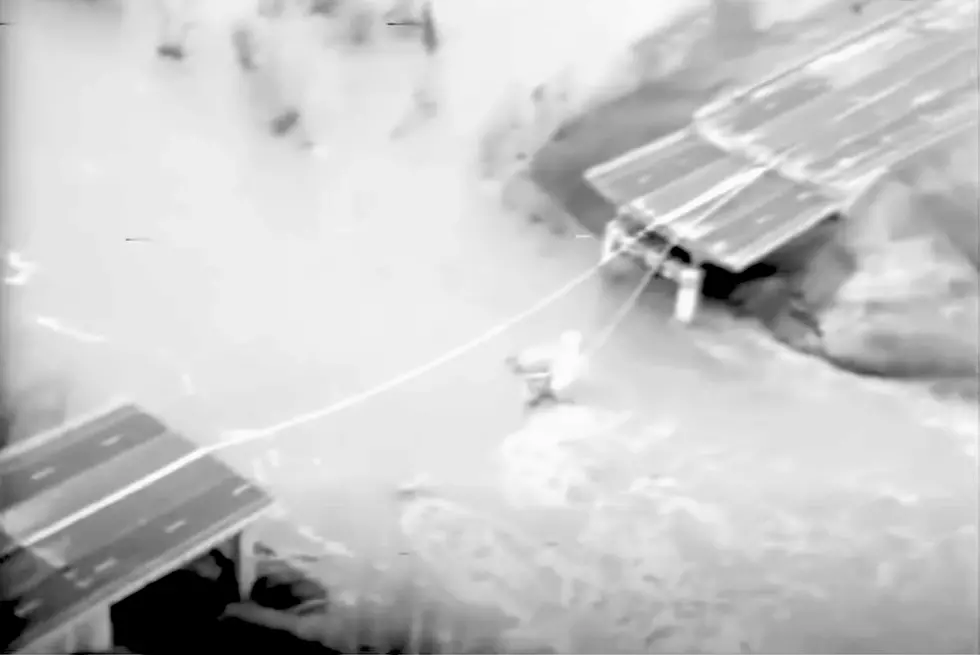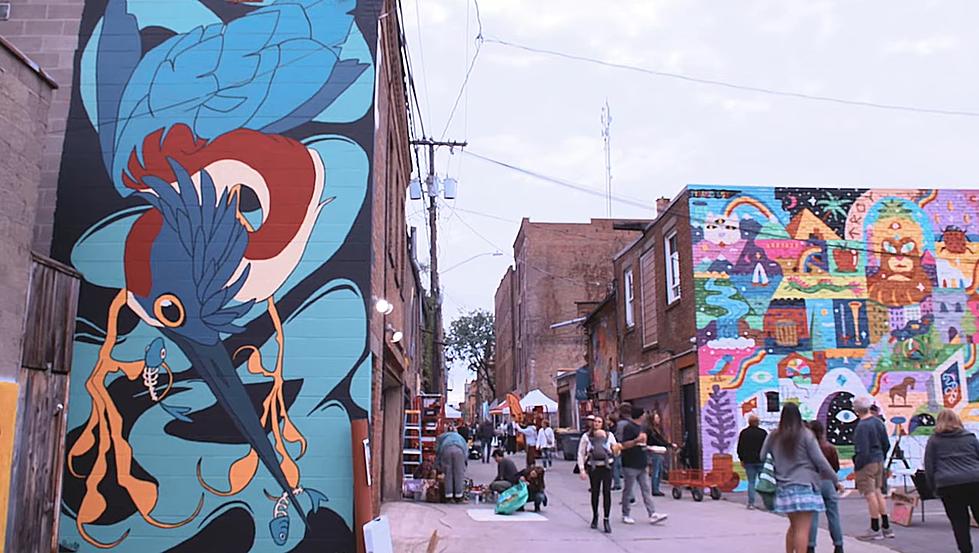
Never Forget: Deadly Schoharie Creek Bridge Collapse on NYS Thruway
[Editorial]
The bridge collapse in Baltimore, which took the lives of ten people, has brought me back to the morning of April 5, 1987, when the heavily traveled Thruway bridge collapsed into the flooded and raging Schoharie Creek. I was almost on that bridge on that day.
Just look at the picture above and imagine driving about 70 mph on that day and realizing at some point, the road was simply gone. It had fallen into the creek below. Would you have been distracted and not realized? Would you have been going too fast to stop. How would you have reacted? It's frightful to think about what was going on in the minds of those five drivers on that Sunday morning in April of 1987. It all makes us wonder how you we would have handled the situation.
Setting the scene, it was a rather typical spring morning in the 1980s, with a heavy rain-drenched spring storm and local flooding caused by the torrential rain, along with melting snow from a hard winter that was far tougher than the one we experienced this year.
When it was all said and done, the disaster was ultimately blamed on faulty construction from the 1950s and a heavy spring rain storm combined with melting snow runoff that caused raging waters some 84-feet below the four highway lanes that escorted thousands of cars over the river every day.
Four cars and one tractor trailer plunged into the turbulent water as the bridge simply plunged and disappeared beneath the powerful current. Those inside the vehicles, 10 unsuspecting people, each perished in the deadly collapse.
The Albany Times Union newspaper described what happened, and what ultimately caused the tragedy.
Built in the 1950s, the bridge’s supports had concrete footings dug 6 feet into the riverbed, instead of piles driven into the bedrock needed because the riverbed soil was vulnerable to washing away. -Times Union
Still, the bridge survived more than 30-years, however, three decades of erosion and the strength of the current on that April morning finally dislodged the supports, sending the highway above plunging into the water.
Those killed included Edward G. Meyer, 61, of Albany, and Donald F. Hughes, 59, and Robert G. Hoffman, 46, both of DeFreestville, the three bowlers who worked together at Niagara Mohawk; Mary Lou Peck, 47, and her daughter Kristen, 22, of Northumberland, who were traveling to a Utica suburb for a baby shower; Roland Charbonneau and Dr. Jackson Carey Dalton, the Shriners from Canada; Douglas and Evangelina Shive, 68 and 70, driving from their home in Manchester, N.H., to see relatives in Texas; and John Ninham, 39, of Green Bay, the truck driver. -Times Union
According to the Times Union, the disaster, which shut down normal traffic flow of the Thruway for 13 months, changed the way bridges in New York are built and how they are inspected. The paper quotes state officials explaining that bridges like this one are inspected every two years, with divers going under water to determine possible erosion and defaults in the structure.
On that day, my initial plan was to leave a friend's house where I had stayed overnight, to return home sometime before noon. My plans changed and I decided to leave later in the day, which by then, the bridge collapse had been made public and all plans were put on hold.
The next day, I had to return to the Utica area for work and I was stuck in a heavy traffic jam, as you might expect, right near the location of the collapse. West-bound traffic was diverted at the Amsterdam exit which is just before the bridge, and I remember driving in bumper to bumper traffic over another much smaller bridge that crossed the Erie Canal. It must have been determined that this bridge could handle the lines of traffic that would ultimately cross over it onto Route 5, a route that would exist for more than a year. None the less, the ride over the bridge was an uncomfortable one as you literally could feel the bridge slightly moving up and down - a kind of bouncing give-and-take that's actually a part of the bridges design.
I can't image what it was like for those 10 people who died on that bridge. We travel on our nation's roads every day, crossing over bridges and overpasses without even realizing. All the while, we're trusting that the design and construction is sound and we rely on its durability and safety, as if we were driving on solid ground. The day the bridge over the Schoharie Creek collapsed, for these people it was either crashing into the swift waters as the road collapsed underneath them, or not being able to stop in time and literally driving off a cliff.
A 2012 documentary on YouTube from Brick Immortar digs into the mistakes that were made that ultimately cost 10 people their lives and cost millions of dollars to repair. Today we trust in those repairs and designs. We trust those engineers and construction workers, and government officials to keep us safe. Like it or not, tragedies like what happened in Baltimore, sadly create doubt in our minds all over again. But, it's really not something you can think about, otherwise one would never be able to drive on our roads and highways again without unbearable anxiety.
This is why we trust. Because the alternative would be unbearable.
Bill Keeler is host of First News with Keeler in the Morning on WIBX.
Read the Times Union story with original photos here.
Watch the documentary below.
The Schoharie Creek Bridge opened in 1955. It collapsed on April 5th, 1987. The newly designed bridge that carries traffic from the NYS Thruway today, opened on May 21, 1988. Next Friday, April 5, 2024 will be the 37th anniversary of the collapse.
35 Years Ago Tragedy on the New York State Thruway
Gallery Credit: YouTube
Baltimore bridge collapse
Gallery Credit: Randy Kirby
Vintage 1951 Video Shows NY Thruway Being Built In Albany
Gallery Credit: Matty Jeff
Top 10 Deadliest States for Highway Driving
Gallery Credit: Kolby Fedore, Townsquare Media
8 Of The Most Haunted Bridges In New York State
Gallery Credit: Dave Wheeler
Top 10 Deadliest States for Highway Driving
Gallery Credit: Kolby Fedore, Townsquare Media
Top 10 Deadliest States for Highway Driving
Gallery Credit: Kolby Fedore, Townsquare Media


![Bills’ Stadium is Still COVERED in Snow, and Buffalo Fans Don’t Care [PHOTOS]](http://townsquare.media/site/78/files/2024/01/attachment-GettyImages-1935528091.jpg?w=980&q=75)

![Tour The Stunning Upstate NY Treehouse With Its Own Hot Tub [PICS]](http://townsquare.media/site/81/files/2021/11/attachment-b5ea3017-26f4-4a33-82ab-27c9f21b49d0.jpg?w=980&q=75)